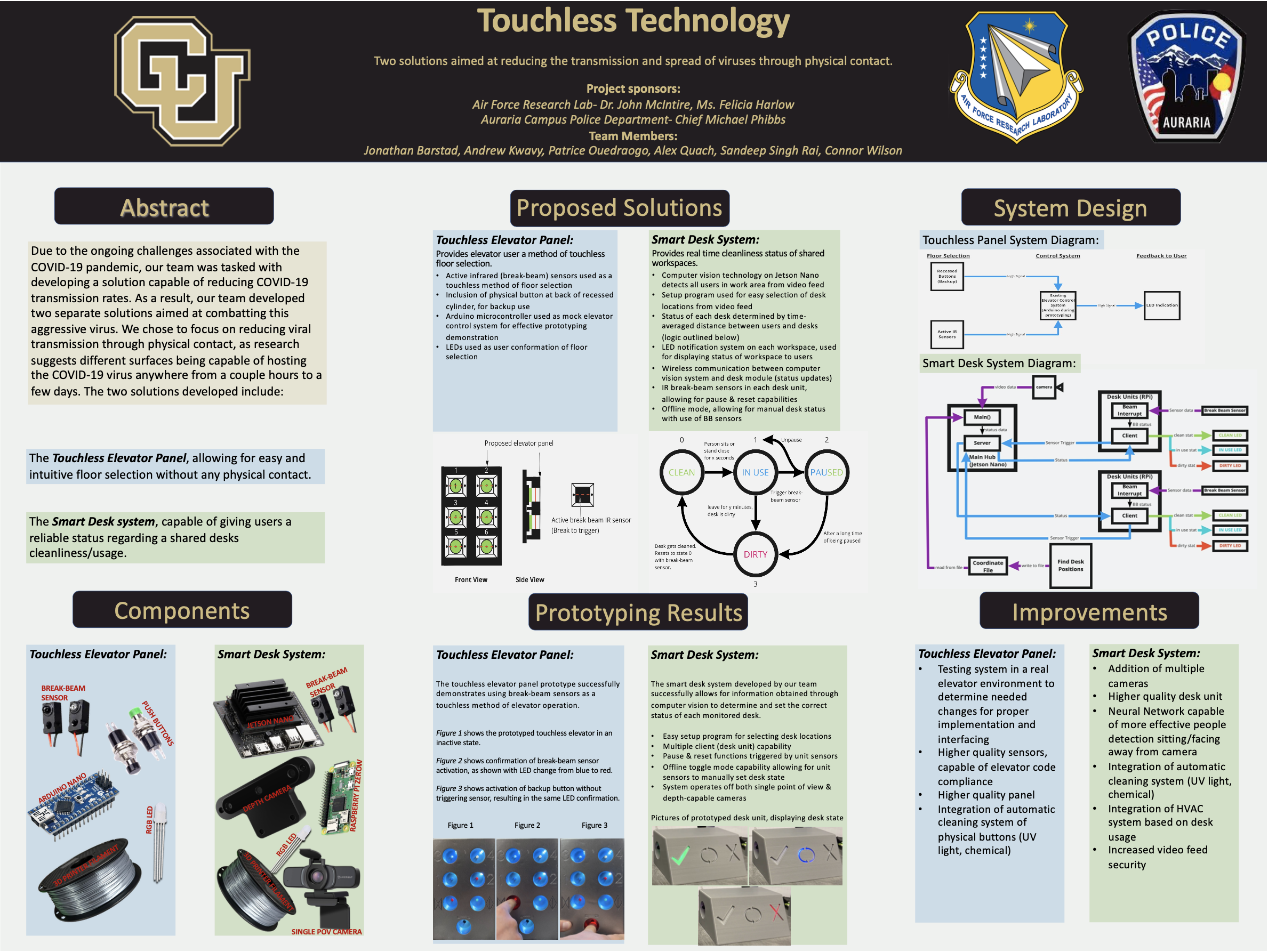Touchless Technology Solutions
Multidisciplinary - Electrical Engineering & Mechanical Engineering
Project Abstract
With all the unprecedented worldwide challenges and changes resultant from the ongoing COVID-19 pandemic, it is clear that many improvements on current infrastructure need to be made in order to effectively reduce viral transmission. Our team was tasked with developing solutions that would allow for touchless methods of operation to easily replace existing tasks requiring physical contact, with the ultimate goal of reducing viral transmission. With the help of our team sponsors, the Air Force Research Laboratory and the Auraria Campus Police Department, two separate solutions aimed at reducing viral spread have been developed and prototyped.
The first developed solution is the touchless elevator panel, which uses recessed cylinders and infrared break-beam sensors to effectively replace the standard elevator button. The implementation of break-beam sensors provides the elevator user with a touch-free method of floor selection, protecting the user’s hand from picking up any unwanted contagion. In the event that the break-beam sensor does not activate, there are backup buttons present at the back of each cylinder. The developed prototype of this concept was realized through the use of 3mm break-beam infrared sensors, an Arduino microcontroller, 5mm indicator LEDs (for user feedback), and a 3D printed panel model.
The second developed solution is the “smart desk” system. This system allows for real time cleanliness tracking of shared workspaces. Through the use of Computer Vision and AI technology, our proposed system tracks all people present in the given area. A setup program is then run to allow for the selection of desk locations in the room. Once the desk locations have been established, the program calculates the distance between each person and each desk in the room. Each desk in the room is then assigned one of four statuses; clean, in-use, paused, or dirty. When a person is close enough to a ‘clean’ desk for an extended amount of time, the system assumes the desk is now ‘in-use’. Likewise, when a user gets up and leaves the desk, the desk status changes from ‘in-use’ to ‘dirty’. For simple user feedback, each desk has a unit on it that provides a lighted display of the desk state; a green checkmark for clean, a blue cycling logo for in-use (which also blinks blue for paused), and a red “X” for dirty. A break beam sensor is also present at each desk unit, enabling the user to pause and reset the desk status.
Project presentation
Project poster
